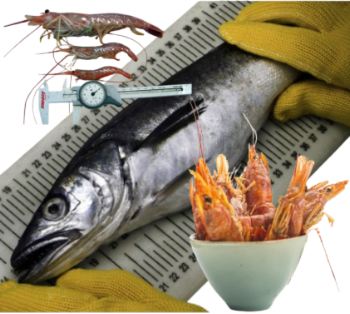|

The hubbsi hake and shrimp, along with the illex squid, are the most important commercial species
Shrimp and Hake Catches: 2025 Season Update (February 4)
 ARGENTINA
ARGENTINA
Wednesday, February 12, 2025, 00:10 (GMT + 9)
The National Secretariat of Agriculture, Livestock, and Fisheries has published the official catch figures for the fresh and frozen fleet for various species.
As of February 4th, 29,822 tons of shrimp and 12,541 tons of hake hubbsi had been caught.
.png)
Shrimp and hake hubbsi in the CFP minutes
At the last meeting of the Federal Fisheries Council (CFP), a summary of the INIDEP's final report on the 2024 shrimp season in national waters was presented, highlighting the reduction in effective fishing time and the decrease in juveniles. In addition, the continuation of the biological stops for hake hubbsi was defined, as has been established since 2016, with the aim of preserving the northern stock.
Shrimp report
The 2024 shrimp season in national waters lasted six months, beginning on March 27, when the fleet began operations in the northern sector, outside the closed season.
"Although its duration was shorter than in previous years, total landings reached 222,754 tons, of which 60% came from national waters, with an average yield 33% higher than the previous year," the summary of the INIDEP report presented in the minutes states.

The highest concentrations of shrimp were located north of parallel 44° South latitude, mainly in sub-areas 4, 5, 7 and 8, with specific yields exceeding 100,000 kilos per hour and predominant commercial categories L1 and L2, which represented 86% of the total processed.
The report highlights the decrease in the proportion of juveniles compared to 2023, and notes that the shrimp population remains in balance, thanks to continuous monitoring and research campaigns that allow for sustainable management of the resource.
Biological stops of hake hubbsi
 The CFP confirmed the continuation of the scheme of biological stops for fresh and freezer vessels, with the aim of preserving the northern stock of hake hubbsi. The CFP confirmed the continuation of the scheme of biological stops for fresh and freezer vessels, with the aim of preserving the northern stock of hake hubbsi.
Imaage: courtesy CEDEPESCA -->
The biological stop system is a tool for controlling fishing effort, more effective for the common hake (Merluccius hubbsi) fishery that develops north of parallel 41° S, where a global Maximum Allowable Catch (MAC) is established, in which individual catch quotas are not assigned as occurs in the southern zone.
The northern stock has shown a gradual and sustained recovery of its reproductive biomass since 2017. Biological stops not only impact the common hake fishery, but also allow for regulating access to all resources throughout the year and, together with other measures, prevent the fleet from concentrating at the same time in the same fishing areas, responding to a precautionary approach.
The scheme of biological stops was established with an effective stop in port of 40 days per year for fresh vessels (which can be divided into four periods of no less than 8 days each) and 60 days for freezer vessels (which can be divided into four periods of no less than 12 days each). The measure was approved unanimously and was reflected in Resolution 1/2025.
[email protected]
www.seafood.media
|



